1. Ronald Ross
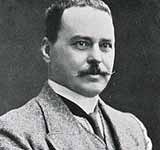
Medicine, 1902Ronald Ross was a British Nobel Prize winner. Ronald Ross was born on 13 May 1857 in a village in Almora district of Kumaon region of Uttarakhand state of India. During the First War of Independence of India (1857), many English rulers went from the plains to the Kumaon hills to save their lives. During this period, Ronald Ross's father Sir Campbell Claibrant Ross arrived in Almora with his wife Malida Charlote Alderton, during this stay, his wife Malida Charlote Alderton gave birth to an infant, named Ronald Ross. Ronald Ross researched malaria parasites in the gastrointestinal tract of mosquitoes, their discovery and transmitted by malaria mosquitoes. Led to his recovery and laid the foundation for combating malaria disease. He resigned from the service for twenty-five years after his discharge of duty with the Indian Medical Service. He then joined the faculty of Liverpool School of Tropical Medicine, England and for 10 years he performed his duties as Professor and President of the Institute of Tropical Medicine. He was awarded the Nobel Prize in 1902 for the treatment and investigation of the life cycle of the malaria parasite Plasmodium.
2. Rudyard Kipling
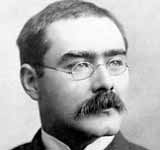
Literature, 1907Joseph Rudyard Kipling (Bombay, British India) was a British author and poet. He wrote The Jungle Book, including stories about the little boy Mowgli being raised by wild animals. Several films were based on this, including by Disney. Kipling's other narrative works include Plain Tales from the Hills and Kim. Kipling was the first Briton to receive the Nobel Prize for Literature in 1907. His poem If— (1910) was voted their favorite English poem by the English in 1995. It is a father's advice to his young son. The story The Man who would be King has been made into a movie, with Michael Caine and Sean Connery. Until the 1950s, Kipling was highly regarded worldwide. Its popularity declined as colonialism was no longer regarded as a completely natural given; after all, his stories and poems are largely situated in the background of colonial India. Intellectuals like George Orwell rejected Kipling's work because he would have been "almost a fascist." Kipling was an advocate of British imperialism. He wrote the poem The White Man's Burden, which Hegelian master-knechtdialectiek and racism emerge: the white man drag the colored people as an expense with them and brings them to civilization.
3. Mother Teresa
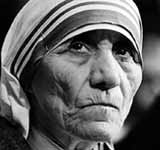
Peace, 1979Mother Teresa, who has been named by the Roman Catholic Church as Saint Teresa of Calcutta, was born in an Albanian family in the name of Anjezë Gonxhe Bojaxhiu in the kingdom of Üsküp, Kosovo Vilayet, Ottoman Empire (present-day Skopje, North Macedonia). Mother Teresa was a Roman Catholic nun who voluntarily took Indian citizenship in 1948. She founded the Missionaries of Charity in 1950 in Kolkata. She helped the poor, the sick, the orphans and the dying people for 45 years and also paved the way for the spread of Missionaries of Charity. Mother Teresa has been honored with various awards and honors for her services. In 1931, she was awarded the Peace Prize of Popajan twenty-third and the Templeton Foundation Award for the Progress of Religion. Vishwa Bharati Vidyalaya gave her Deshikottam title which is the highest title given by them. The Catholic University of America conferred her with a doctorate degree. She received the title of 'Padma Shri' in 1962 by the Government of India. The title of 'Order of the British Empire' was conferred by Britain in 1988. The Banaras Hindu University conferred her with a D.Litt. degree. On 19 December 1979, Mother Teresa was awarded the Nobel Prize for human welfare work. She was the third Indian citizen to be awarded this award.
4. 14th Dalai Lama
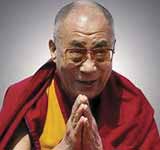
Peace, 198914th Dalai Lama Tenzin Gyatso is the Head of State and Spiritual Teacher of Tibet. He was born on 6 July 1935 in the Omaan family living in Takastar region of north-eastern Tibet. At the age of two, the boy Lhamo Thondup was identified as the incarnation of the 13th Dalai Lama Thubten Gyatso. The Dalai Lama is a Mongolian title meaning Ocean of Knowledge and Karuna, a descendant of the Dalai Lama, is considered to be a manifestation of the qualities of the Buddha. In 1987, His Holiness presented a five-point peace plan, taking the first step towards finding a peaceful solution to the deteriorating situation in Tibet. He held the view that Tibet can be transformed into a sanctuary — a peace zone located in the heart of Asia where all conscious creatures can live in peace and where the environment is protected. But China failed to react positively to the various peace proposals put forward by His Holiness the Dalai Lama. Every Tibetan has a deep and inexplicable association with His Holiness the Dalai Lama. His Holiness the Dalai Lama was awarded the 1989 Nobel Peace Prize for continuing the non-violent struggle for the liberation of Tibet. He has continued to support the policy of non-violence, even in situations of extreme repression.
5. Abhijit Banerjee
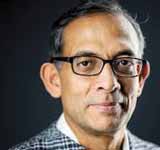
Economics, 2019Abhijit Vinayak Banerjee was born in Calcutta, India. His mother Nirmala Banerjee was a professor of economics at the Center for Studies in Social Sciences, Calcutta, and father Deepak Banerjee, a professor and head of the economics department at the Presidency College, Calcutta. Abhijit Banerjee is a noted Indian-American economist who was jointly awarded the Nobel Prize for Economics for the year 2019 along with Esther Duflo and Michael Kremer. He is a Ford Foundation International Professor of Economics at the Massachusetts Institute of Technology. He is the sixth married couple to win the Nobel Prize jointly with his wife Esther Duflo. Abhijit was given the 2019 Nobel Prize in Economics. The award was given to him jointly with his wife Esther Duflo and Michael Kremer. The Royal Swedish Academy of Sciences, which has been awarded the Nobel Prize, said in its statement, "These winners of the 2019 Economics Prize have done research that greatly improves our ability to fight global poverty." This statement further states that in just two decades, his new research has changed the development of economics which is now an excellent field of research.
6. Amartya Sen
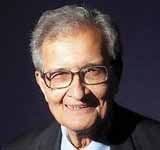
Economics, 1998Amartya Sen was born in a Kayastha family in Shanti Niketan, Kolkata, where his maternal grandfather Kshiti Mohan Sen was a teacher. His father Ashutosh Sen taught chemistry at Dhaka University. After completing his studies from Kolkata-based Shanti Niketan and Presidency College, he was educated at Trinity College, Cambridge. He also spent some years of his life in Mandalay (located in Burma) and got his initial education in Dhaka. Amartya Sen is an economist, he was awarded the Nobel Prize for Economics in 1998. He has also been a teacher at Jadavpur University, Delhi School of Economics and professor at Oxford University. Sen has also taught at MIT, Stanford, Berkeley and Cornell University as a guest teacher. Sen started his career as a teacher and research scholar from the Department of Economics, Jadavpur University. Between 1960 and 1961, Sen was a visiting professor at the Massachusetts Institute of Technology in the United States, where he came to know Paul Samuelson, Robert Solo, Franco Modiglini, and Norbert Wiener. He was also a visiting professor at UC-Berkeley and Cornell.
7. C. V. Raman
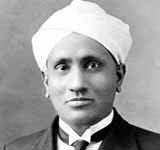
Physics, 1930C. V. Raman was an Indian physicist. He was awarded the prestigious Nobel Prize in Physics in the year 1930 for his outstanding work on the scattering of light. In 1954, he was conferred with the title of Bharat Ratna by the Government of India and in 1957 was awarded the Lenin Peace Prize. He did many important things as a learner. In 1906, his first research paper on light diffraction was published in the Philosophical journal of London. When rays of light pass through an aperture or on the edge of an opaque object and fall on a screen, stripes of sharp or colored light appear on the edge of the rays. This phenomenon is called 'diffraction'. Diffraction is a common feature of motion. This suggests that light is produced in waves. Raman was made a Fellow of the Royal Society for Research in London in 1924 AD. For the discovery of the effect named after him, Raman received the Matteucci Medal in 1928 and both the Nobel Prize in Physics and the Hughes Medal in 1930. After his retirement in 1948, he founded the Raman Research Institute in Bangalore and stayed in the same institution. It was conferred with the title Bharat Ratna by the Government of India in 1954. On 28 February 1928, Chandrashekhar Venkata Raman discovered the Raman Effect, in whose memory this day is celebrated every year in India as 'National Science Day'.
8. Har Gobind Khorana
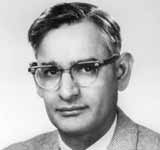
Medicine, 1968Har Gobind Khorana was an Indian-American molecular biologist and Nobel laureate in 1968, along with Robert W. Holley and Marshall Nirenberg, he won the Nobel Prize in Physiology and Medicine for describing the genetic code and how it plays a role in protein synthesis. He became a naturalized citizen of the United States in 1966 and lived for a long time in Cambridge, Massachusetts, United States working at the MIT College of Chemistry. In 1952 he entered the University of British Columbia, Vancouver. That same year, he married Esther Elizabeth Sibler. The two had three children together: Julia Elizabeth, Emily Anne, and Dave Roy. In 1960 he moved to the United States, where he started working at the Institute for Enzyme Research at the University of Wisconsin. He was granted American citizenship in 1966 and was awarded the Albert Lasker Award for Basic Medical Research in 1968 and the National Medal of Science in 1987. In 1970, Khorana became the Alfred Sloan Professor of Biology and Chemistry at the Massachusetts Institute of Technology, where he continued to work until his retirement in 2007. He was also a member of the Board of Scientific Governors at The Scripps Research Institute, and held a Professor Emeritus status at MIT.
9. Kailash Satyarthi
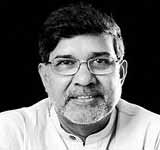
Peace, 2014Kailash Satyarthi is an Indian child rights activist and advocate against child labor. He founded the Bachpan Bachao Andolan in the year 1980, after which he has worked to protect the rights of more than 83,000 children in 144 countries around the world. It was due to Satyarthi's actions that Treaty No. 182 was adopted by the International Labor Union on the worst categories of child labor in the year 1999, which is now a major guide in this field for governments around the world. His works have been honored by various national and international accolades and awards. These awards also include the Nobel Peace Prize for the year 2014 which has been conferred on jointly with Malala Yusufzai, a female education activist from Pakistan. Born in Vidisha, Madhya Pradesh, India, Kailash Satyarthi runs the 'Bachpan Bachao Andolan'. He is an electrical engineer by profession, but he left his career at the age of 26 and started working for children. He is also the President of 'Global March Against Child Labor'.
10. Rabindranath Tagore
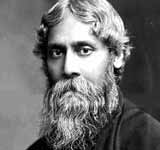
Literature, 1913Rabindranath Tagore was a famous poet, novelist and playwright. He was also the first Indian winner of the Nobel Prize in Literature in 1913. Tagore wrote the Indian and Bengali national anthem. Rabindranath Tagore was born on May 7, 1861, during the British colonial rule of India, to a wealthy Brahmin family living in Calcutta. He often visited Europe and America by teaching in several countries, especially after being awarded the Nobel Prize in Literature in 1913. His works include a grief play entitled The King of the Dark Chamber (1910) and several novels, of which Gora (1908) is considered by some to be more important than Rudyard Kiplings painting of Indian life in Kim. Rabindranath Tagore is mostly known for his poems, Tagore has also written many novels, essays, short stories, travelogues, plays and thousands of songs in his lifetime. His short stories written in Tagore's prose are probably considered the most popular. Thus they are actually attributed to the origin of the Bengali language version. His works are often quite notable for their rhythmic, optimistic, and lyrical nature. Tagore wrote many books related to history, linguistics and spirituality.
11. Subrahmanyan Chandrasekhar
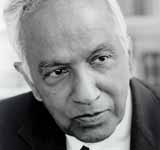
Physics, 1983Subrahmanyan Chandrasekhar was a noted Indian-American astronomer. He received the Nobel Prize in Physics in 1983, jointly with William A. Fowler, for his studies on physics. Chandrasekhar was on the faculty of the University of Chicago from his death in 1937 to 1995. Dr. Subrahmanyam Chandrasekhar was born on 19 October 1910 in Lahore (now in Pakistan). His early education took place in Madras. At the age of 18, Chandrasekhar's first research paper was published in the Indian Journal of Physics. By the time he graduated from the Presidency College in Madras, many of his research papers had been published. One of them was published in the Proceedings of the Royal Society, a matter of pride for such a young man. In 1934, at the young age of 24, he solved his scientific curiosity about the falling and disappearing star. Shortly thereafter, on 11 January 1935, at a meeting of the Royal Astronomical Society of London, he also presented his original research paper that white dwarf stars, after attaining a defenite mass, in their weight and Cannot grow, eventually they become black holes. He explained that the stars whose mass will be 1.4 times that of the Sun today, will eventually shrink and become very heavy. His mentor Sir Arthur Eddington at Oxford did not accept this research at first sight and ridiculed him. But he was not going to give up. He was again engaged in research and finally, his theory was recognized in 1983, exactly fifty years after his discovery as a result of research being done around the world in this direction. As a result, the year 1983 Nobel Prize in Physics was jointly awarded to him and Dr. William Fowler.
12. Venkatraman Ramakrishnan
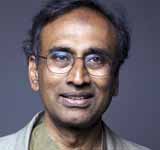
Chemistry, 2009Venkataraman "Venky" Ramakrishnan is a biologist. He has been awarded the 2009 Nobel Prize in Chemistry. These awards have been given to him for his excellent study of the function and structure of ribosomes that make proteins inside the cell. Their achievement will help in developing effective antibiotics. Israeli female scientist Ada Yonath and Thomas A. Steitz of the United States were also jointly selected for this honor. The three scientists explained to the world through three-dimensional images how ribosomes react with different chemicals, using X-ray crystallography to reveal thousands of times larger images of ribosomes. Mr. Venkataraman Ramakrishnan is associated with the prestigious University of Cambridge in the UK and is the head scientist of the Structural Studies Department of the University's MRC Laboratories of Molecular Biology. Venkataraman, popularly known as Venky, is the seventh Indian and third person of Tamil origin to have been awarded the Nobel Prize. He got his early education in Chidambaram, Tamil Nadu.
